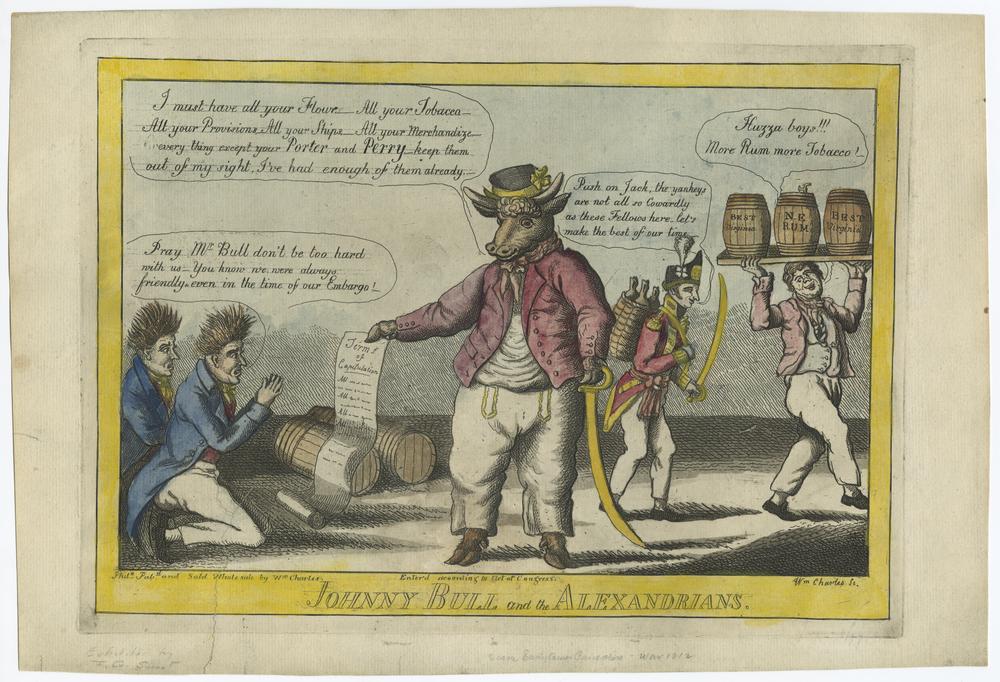Chew on This: Tasting Notes

William Charles, Johnny Bull and the Alexandrians, c1814
by Nancy Siegel, Professor of Art History and Culinary History, Towson University
The War of 1812, often called the second war for independence, was momentous for the cities of Alexandria, VA and Baltimore, MD (think of the Battle of Baltimore at Fort McHenry and Francis Scott Key’s poetic writing that would become the lyrics for the Star-Spangled Banner). Primarily a naval battle over trade routes, British forces attempted to cut off provisions such as rum, flour, molasses, tobacco, cod fish, porter and perry.
In Alexandria, VA, for example, British troops seized the city with little effort. In the satirical print Johnny Bull and the Alexandrians (c1814), Scottish-born artist William Charles mocks British efforts to make off with sought-after food and drink. Johnny Bull (a symbol of Britain) says, “I must have all your Flour—All your Tobacco—All your provisions—All your ships—All your Merchandize—Every thing except your Porter and Perry keep them out of my sight, I’ve had enough of them already.”
The loss of provisions such as flour would be devastating to the city’s residents as bread was a mainstay of the average diet. Mention of Porter and Perry however, cleverly refer not only to the American military might of David Porter and Oliver Hazard Perry but also to the alcoholic beverages which bear the same names.
Perry, for example, is made from fermented pears. It was a common alcoholic beverage in England as well as in France by the sixteenth century and became associated with New England in the colonial era. True perry pears are small and rather acidic but the drink can be made from any variety of pears with varying results. The process for making perry is comparable to cider: fruit is picked, crushed, pressed for its juices, then fermented. Unlike apples though, pears can have higher sugar levels and also contain an unfermentable sugar called sorbitol which acts as a laxative. Enjoy, but beware!
